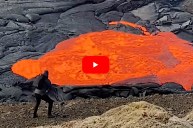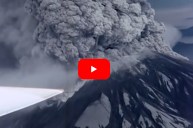Great Lakes are fascinating all on their own. Their sheer size and beauty typically captivate scientists and nature enthusiasts alike. However, this Great Lake is getting a lot of attention for a different reason. Dozens of mysterious craters have been discovered at the bottom of this Great Lake and they have scientists baffled.
This Great Lake Has An Even Greater Mystery
Lake Michigan has scientists scratching their heads. The NY Post shares that "Back in 2022, the Wisconsin Shipwreck Coast National Marine Sanctuary detected the anomaly through sonar." This Great Lake has "dozens of massive, 600-foot-wide sinkholes." Scientists discovered this massive craters "500 feet below" the surface of the lake.
While there is no doubt that the massive craters at the bottom of the Great Lake are cool, it has scientists begging the question, how did they form? Wisconsin Maritime Museum Director Kevin Cullen shared that only "10 to 15% of Lake Michigan's massive floor has been explored." That leaves a lot of room for great mysteries like this one.
Although some scientists argue that the holes are sinkholes, "formed by glaciers centuries ago" not everyone is convinced. A local shipwreck hunter, Brendon Baillod, believes that these holes are more like craters. Baillod explains that he believes these craters are "the result of trapped gas or water upwelling towards the surface." Although a definitive answer has not been given, scientists are embracing the mystery.
Craters Vs. Sinkholes

Pexels: Wendelin Jacober
While scientists debate over what these mysterious craters at the bottom of the Great Lake are, here are some key differences between a sinkhole and a crater. First, they differ in how they are formed. One way craters form is when a volcano erupts. During the eruption, the volcano releases lava, gas, and ash. The pressure and heat of the explosion causes the ground to collapse, leaving a crater behind.
Whereas sinkholes form when underground water dissolves rock beneath the surface. While both appear as holes in the ground, craters tend to be wider and deeper. Furthermore, sinkholes tend to have distinct features such as slumping edges or a funnel shape.




